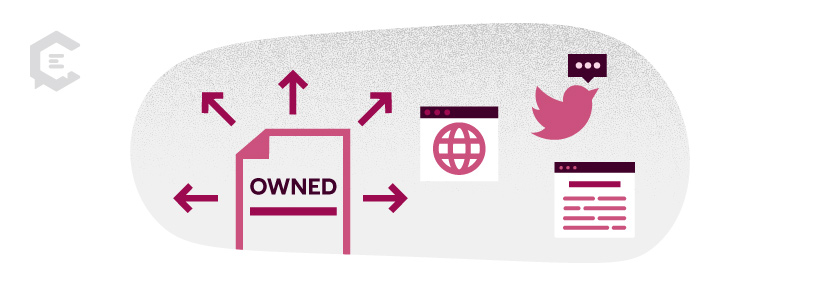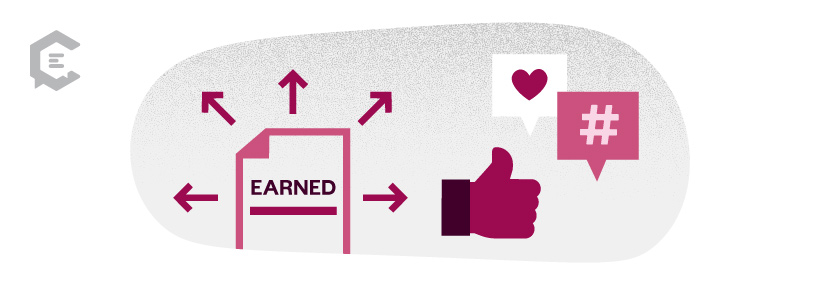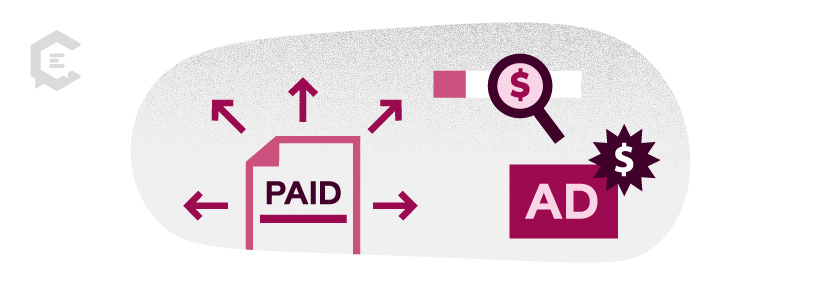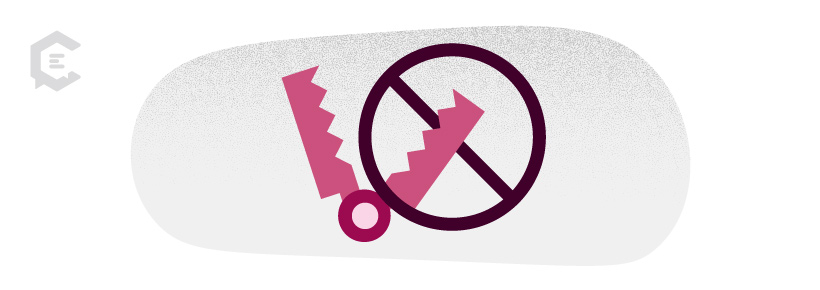Here’s a fun fact: global content marketing revenue totaled $63 billion in 2022. Furthermore, the content marketing industry will reach $107 billion by 2026.
That’s a lot of dollars. It also underscores the need to produce great content.
But generating compelling content is half the battle. The other half is ensuring that the content you create content ends up in front of your audience. This, in turn, requires a well-thought-out content distribution system to ensure content delivery via the right platforms.
A solid content distribution strategy does the following:
- It tells you what content distribution platforms and channels are best for reaching your audience
- It helps you determine the tone, language, and “feel” of your content
- It allows you to measure what works and what doesn’t when it comes to engagement and action
Content Distribution Platforms Defined
Content distribution involves using different channels and platforms to share your content. While content creation has gotten a lot of attention, content platforms, not so much. However, distribution is an important facet of content marketing, and platform selection is also an important facet of distribution.
According to MarkWide Research, the global content distribution platform market is experiencing phenomenal growth due to an increasing demand for seamless content distribution across different channels. Businesses better understand the need to deliver the right content to the right audience at the right time.
You likely already know there are a plethora of platforms on which to share your content. There’s social media, your website, paid platforms, and more. From a high-level view, content distribution platforms can be divided into three basic categories: owned, earned, and paid. Each has its place in your distribution strategy.
Owned Distribution Platforms – 100% Controlled
Owned distribution gives you total management over content creation and how it’s circulated. As the title suggests, you “own” those platforms and what’s on them.
Your website is the poster child of an owned distribution platform – you are in charge of it and decide what to upload. Also owned? YouTube, Facebook, Pinterest, X or LinkedIn pages. Another owned platform example involves emailing – again, you determine what and to whom your information is through platforms like Constant Contact or MailChimp).
Then, there are third-party “community” platforms like Quora and Medium. While you don’t strictly “own” these, they do allow you to publish content for free, giving you greater reach.
The main advantage of owned platforms is that you own and control the content on them. The more owned platforms you have, the larger your digital footprint and audience reach.
But there can be downsides, including:
- Extra effort required to drive audiences to these platforms
- Emails could be flagged as spam (or end up in a junk file)
- Updates in social media platform algorithms: the content that appeared at the top of your audience’s feed last week could be lost in the ethernet this week
Earned Distribution Platforms – Sharing the Content “Wealth”
Earned distribution occurs when third parties borrow your content to repost, curate, and showcase it on their platforms or channels at no cost to you. Those third parties can include customers, prospects, journalists, and bloggers.
If the blog on your website finds its way to a client’s site, this represents earned distribution. Articles published on a third-party site like Forbes Council also qualify as earned distribution, as do brand reviews on unaffiliated platforms. The journalist or blogger who likes your content well enough to repost on their news sites is also an earned distribution platform (it’s even better when they tap you as a source for their original content).
The remarkable aspect of earned distribution platforms is they boost the “street cred” of your brand. The content is still yours, but others find it compelling enough to share with their audiences. Content through earned distribution platforms also tells your audience that your audience that your content (and, by extension, your company) is important enough to merit mention by an independent source.
However, earned distribution is “earned” for a reason. You must build relationships with others and encourage them to share what you produce. Plus, this works only if you have content worth sharing.
Another potential downside is loss of control over what you create. Third parties can cherry-pick your content and use it however they please. There’s also the chance that those other platforms might not credit you as the content’s source.
Paid Distribution – Cash for Visibility
As the name suggests, paid channels or platforms mean you pay to showcase your content. Examples of these platforms include:
- Pay-per-click, like Google, Facebook or Instagram ads
- “Follower” content
- Paid content on social media, like that on Google search engine optimization pages
- Paid influencers on YouTube or Facebook/Instagram “Reels”
- Sponsored paid content on sites like Buzzfeed or Apple Podcasters
Paid content platforms can provide a built-in targeted audience for your product. These platforms can increase your visibility and generate metrics to measure your results.
On the other hand, you’re paying to get that content in front of your audience. Content with the word “sponsored” ahead of it might not have the same cachet as earned content.
Paid distribution platforms can generate “ad fatigue” among your followers. Let’s put it this way – you’re not the only one paying to take possession of your audience’s eyeballs; you compete with other content. Furthermore, the ads “following” your targeted audience from site to site could create a backlash against your brand.
Evaluating Platforms – What’s Right for You?
So, yes. There are a lot of content distribution platforms out there. In addition to spending time creating your content, evaluating what platforms are best for showcasing it is essential.
For the best results, consider the following:
Your marketing goals. What is the goal of your content? Do you want to encourage sales? Generate leads? Educate? The best platform for sales might be those social influencers or sponsored content, while owned content platforms would be your best bet for educating and informing. Email platforms can help generate leads.
Where your audience gets information. Your content aims to address and solve your audience’s problems. The goal of your platform is to put that content in front of your audience. This means you need to research where they go for information. If they frequent X regularly, your efforts should be focused on that. If they read Medium or tune in to what the latest influencer has to say on YouTube, focus on those platforms.
Avoiding Content Distribution Common Pitfalls
Avoid potential problems with your content distribution efforts with the following tips:
Select the platform BEFORE creating the content
The typical order in content marketing involves developing the content first and then worrying about how it’s disseminated. This is not a good strategy. The best use of content distribution platforms is to decide on your audience’s pain points (Marketing 101). Then, determine what platform (or platforms) you’ll use to target that audience. After that, you can create your content.
Use more than one platform
Here’s another fun fact: 90 percent of content marketers use websites and blogs the most in their content strategy. The owned distribution platform is all well and good. But if this is all you’re using, you could miss out on a wider audience reach. Consider developing sources to boost your content on earned distribution platforms. In some cases, a pay-to-click campaign can also be effective. The takeaway here? Don’t limit yourself to just one platform.
Adapt content to fit the platforms
Whether you’re using owned, earned, or paid platforms, adapt that content to fit your platform. Posting a 1,000-word treatise on X isn’t a good idea. By the same token, YouTube runs videos, not white papers.
You can also design content to encourage sharing it on other platforms. For instance, well-designed infographics are picked up by other parties and shared on platforms. So are well-thought-out videos.
Rely on KPIs and metrics — and adapt
Ensure that the time and effort you spend on content creation and distribution are adequate by putting key performance indicators and other metrics into place. These can tell you if the platforms are effective in reaching your audiences. If they aren’t, you might need to re-evaluate your platforms.
Knowing the Right Content Distribution Platform
You could have the best, most compelling content out there. But it doesn’t mean much if it doesn’t reach your audience. You should spend as much time determining how that superb content is distributed as you do in creating it.
Content distribution strategies should also be fluid. You should pay attention to feedback and metrics to ensure that your platforms reach the audiences you want. Understanding content distribution platforms and how they operate is essential to your overall content marketing efforts.
Reach out to ClearVoice for assistance reaching your content creation and distribution goals. We’re happy to sit down with you and analyze how your content strategies can be improved.









